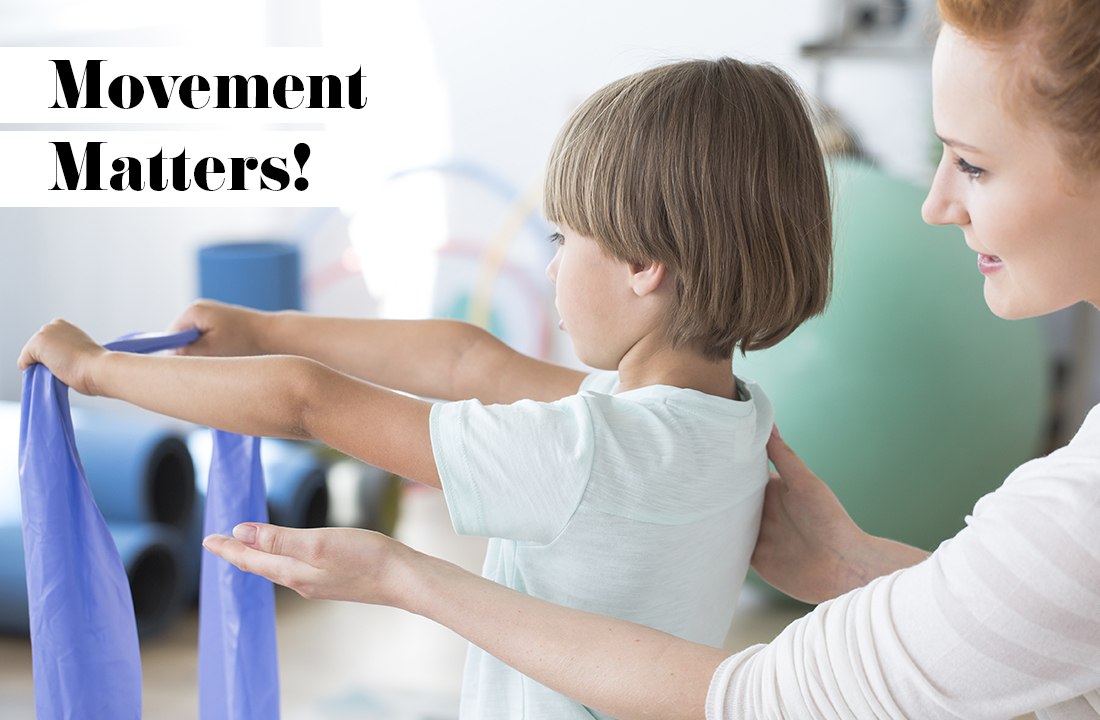Movement Matters!
JOANNA KOUDELE, Maximum Performance Physical Therapist
Movement can be everyone’s favorite subject.
Hi everyone! I hope you and your kids are adjusting well to our “new normal.”
This is such an unsettling time and change can be really difficult for kids and adults—especially when it is so abrupt. Hopefully, you are settling into a bit of a routine and movement is part of your day because a little goes a long way for our bodies–and brains.
Movement prepares the brain.
Movement delivers oxygen to the brain by increasing circulation. Our bodies use this increased circulation to transport oxygen through the bloodstream, and activity uses (requires/burns) neurotransmitters. These neurotransmitters are actually chemicals that carry messages and instructions, which are important for learning as well. Activity also creates positive changes in the central nervous system that’s comprised of the brain and spinal cord. Finally, movement heightens your state of alertness by requiring more neurons to fire for communication throughout your body.
Movement provides brain breaks.
Movement decreases fatigue. Sitting in the same place and position for extended periods depletes your energy. Think about how tired you feel after a long study session or sitting in a car for several hours. You feel exhausted, even though you haven’t done anything physically taxing at all. Movement creates energy! Just going for a short walk or doing a few minutes of light exercise is refreshing enough to give you that extra push to finish your assignment or project.
Movement supports exercise and fitness.
Movement relieves stress. Remember those neurotransmitters (chemical messages)? Well, they can elevate your mood by producing serotonin and dopamine, which are increased/activated with movement. Ever heard of a runner’s high? This refers to an endorphin release from exercise. And, movement increases confidence through progress with skills, increased abilities and perseverance toward a goal.
Movement matters.
The best way to make sure that you incorporate movement and exercise into your day is to schedule it. Movement should occur every one to two hours (just one-three minutes of activity is enough to realize benefit!) depending on the child’s age. Reminding kids of upcoming activities can help them focus and ease anxiety. Movement can also be used as a motivational reward by letting them select their favorite song to dance to after their assignment is complete.
There are several kid friendly resources on YouTube, and some of my favorites are on Moose Tube. Check these out:
“Purple Stew”
“The Pirate Life”
“Boom Chicka Boom”
You can also check out these videos from Koo Koo Kanga Roo:
“Milkshake”
“Slow-Mo Machine”
“I Get Loose”
Be creative and make it fun. Let’s get moving!



